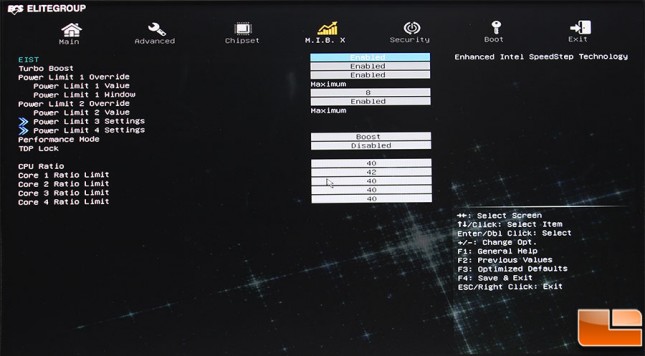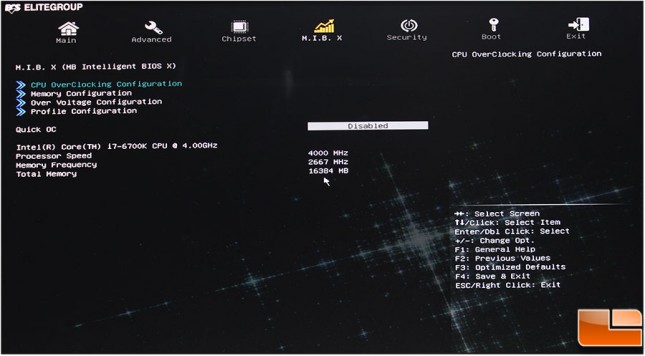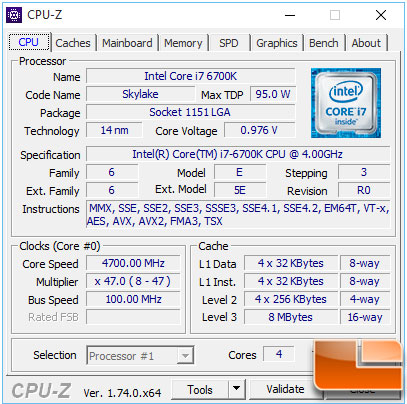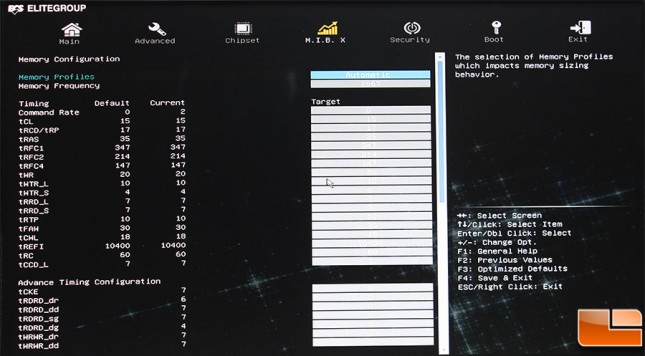ECS Z170 Claymore Motherboard Review
ECS Z170 Claymore Overclocking
This specific configuration of hardware has been used for testing many Z170 motherboards. We have been able to successfully overclock the Intel i7-6700K up to 4.9GHz; while the Kingston Fury DDR4 kit has been up as high as 3000MHz. While those are the best results we have obtained, the average overclock of the processor has been 4.7GHz or 4.8GHz, and the Kingston Fury has been averaging 2900MHz or 2933MHz.
ECS has a Windows based overclocking utility, however it is not compatible with the Z170 Claymore. I hope ECS spends sometime to make it compatible, as there are some users that prefer to do their overclocking within the Windows environment. For those that prefer to overclock through BIOS settings, the ECS M.I.B. X is their section within the BIOS for overclocking the CPU, and Memory. The “Quick OC” option is a pre-configured profile to overclock the system to 4.9GHz! I would highly recommend using this option with care.

Overclocking the CPU is done rather easily, simply increase the CPU Ratio to the desired setting. For our overclocking experience, we will disable the Intel SpeedStep Technology (EIST), and the Turbo Boost. From there we will slowly increase the CPU Ratio until we are unable to boot into Windows, then back it down until we can run our benchmark suite successfully.
ECS provides a large number of ways to adjust the voltage of the various components. Should you need to adjust the voltages, each of the adjustments are done in whole numbers, based in Millivolts. Of course there are a couple of exceptions, the “Core PLL Voltage Offset” is increased in whole numbers, but it shows it as 15mV per unit. The other exception is the DIMM Voltage, here ECS has provided a drop-down menu that makes it much easier to control the voltage. Still a lot of calculations need to be done to keep it under control and not fry your components.
By slowly increasing the CPU ratio, we were able to get the ECS Z170 Claymore to run stable at 4.7GHz. We were unable to get it to run stable at anything higher, even by increasing the voltage to the CPU. Previously I mentioned the “Quick OC” option, after all testing was done at the 4.7GHz, I attempted to use this option, and as suspected, the system failed to POST.
When doing overclocking, it is entirely possible you will need to reset the BIOS multiple times. Most motherboard manufacturers have made this extremely easy to do with a push of a button, or a temporary jumper change. On the ECS Z170 Claymore, you have to do a jumper change in order to reset the BIOS. While this is a reliable method of doing a BIOS reset, it can be highly annoying if you find yourself having to frequent resets.
The Kingston Fury DDR4 kit ran at it’s rated speed of 2666MHz right from the start. We have been able to overclock this kit up to 3000MHz without increasing the voltage. Unfortunately, on the ECS Z170 Claymore, any attempt at overclocking the memory failed, resulting in a BIOS reset.





